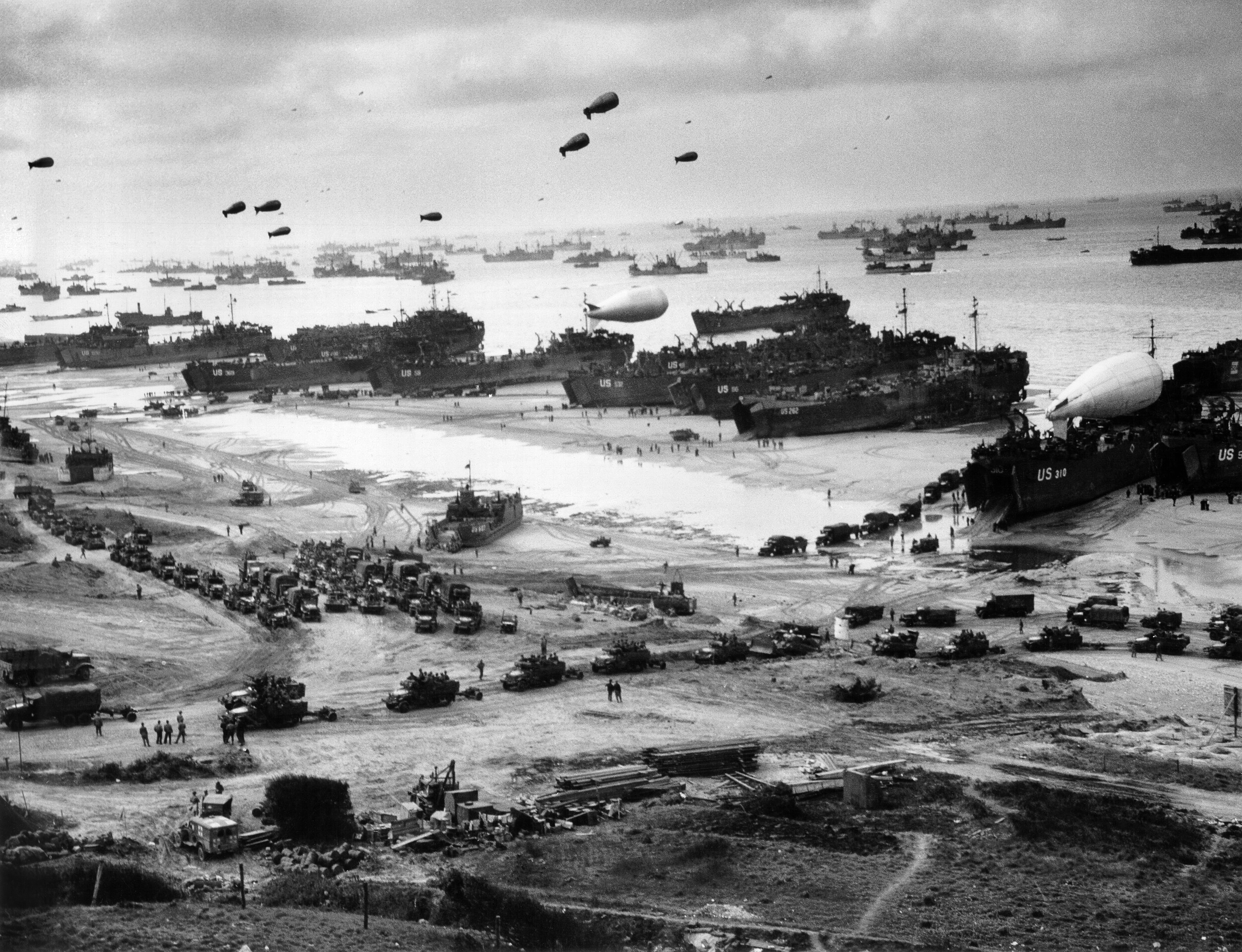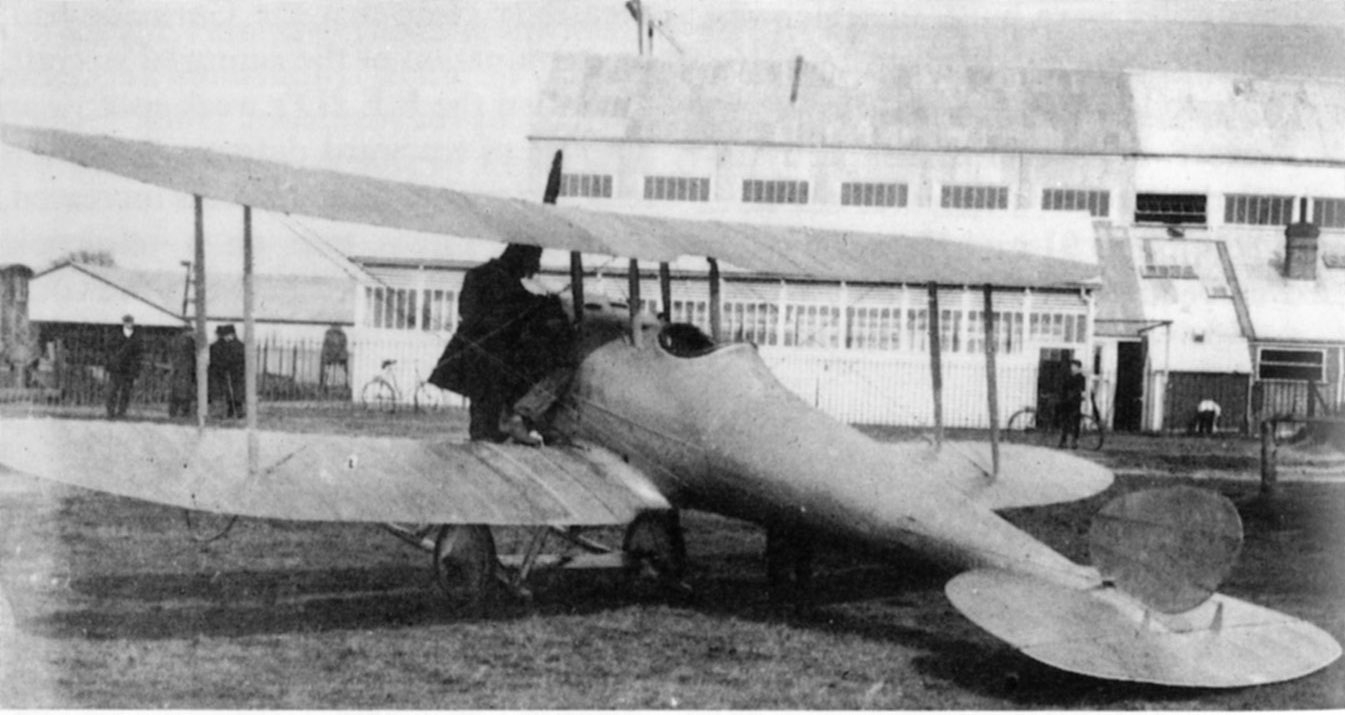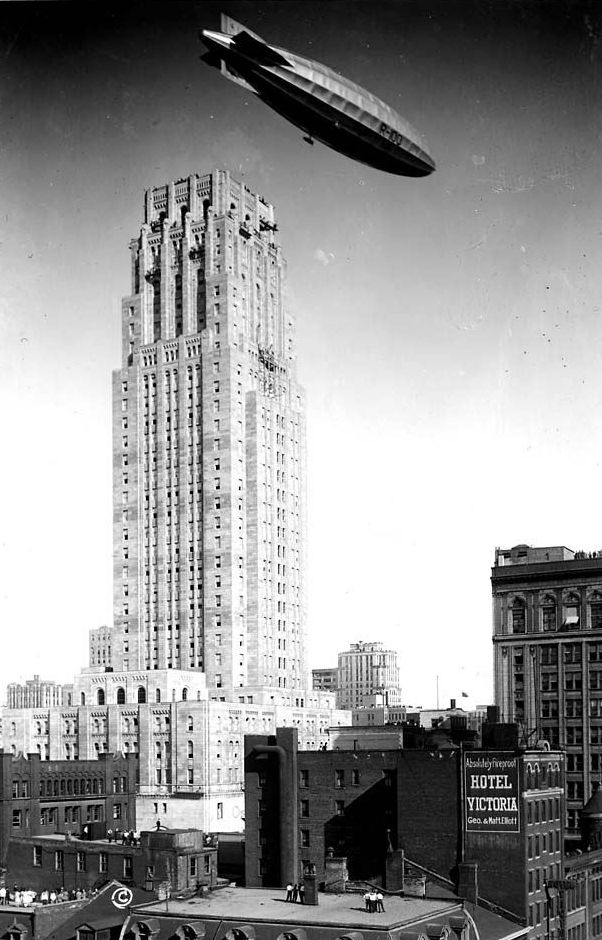|
Lord Kings Norton
Harold Roxbee Cox, Baron Kings Norton (6 June 1902 – 21 December 1997) was a British aeronautical engineer. He was notable for his contributions to British industry, particularly aeronautical engineering, and for his part in the establishment of Cranfield University. Life Cox was the son of jeweller William John Roxbee Cox, of Handsworth, Staffordshire, and Amelia (''née'' Stern). The statistician David Cox is a distant cousin. Born Harold Roxbee Cox, he was known as 'Roxbee' to his friends. As a child, his father took him to early air shows and air races, and his imagination was fuelled by pilots of the time such as Claude Grahame-White, B. C. Hucks and Gustav Hamel, beginning a lifelong fascination with aircraft. Cox left Kings Norton Grammar School (now King's Norton Boys' School) at the age of 16 and joined the Aircraft Design Department of the Austin Motor Company at Longbridge, which was at that time, designing and building light aircraft such as the Whippet and Kest ... [...More Info...] [...Related Items...] OR: [Wikipedia] [Google] [Baidu] |
The Right Honourable
''The Right Honourable'' (abbreviation: The Rt Hon. or variations) is an honorific Style (form of address), style traditionally applied to certain persons and collective bodies in the United Kingdom, the former British Empire, and the Commonwealth of Nations. The term is predominantly used today as a style associated with the holding of certain senior public offices in the United Kingdom, Canada, New Zealand, and, to a lesser extent, Australia. ''Right'' in this context is an adverb meaning 'very' or 'fully'. Grammatically, ''The Right Honourable'' is an adjectival phrase which gives information about a person. As such, it is not considered correct to apply it in direct address, nor to use it on its own as a title in place of a name; but rather it is used in the Grammatical person, third person along with a name or noun to be modified. ''Right'' may be abbreviated to ''Rt'', and ''Honourable'' to ''Hon.'', or both. ''The'' is sometimes dropped in written abbreviated form, but is ... [...More Info...] [...Related Items...] OR: [Wikipedia] [Google] [Baidu] |
King's Norton Boys' School
King Edward VI King’s Norton School for Boys, (formerly known as King’s Norton Boys’ School) is a secondary school for around 800 pupils aged 11 to 16. It is located on Northfield Road in Kings Norton within the formal district of Northfield of the city of Birmingham, England. It is situated east of the A441, just north of the B4121 in Cotteridge. History It was founded as a boys' grammar school in the reign of King Edward VI, circa 1550. It was refounded in 1912. In the 1960s, when administered by the City of Birmingham Education Committee, it had around 600 boys. It became a boys' comprehensive school in 1975. The grammar school had five houses in the 1960s, but they amalgamated to four in 1969. It was announced that the sixth form centre at Kings Norton boys school would close following the 2017–2018 school year and the year 7 intake increased to 150 students. In September 2023, King’s Norton Boys’ School received approval from the West Midlands Regional Adv ... [...More Info...] [...Related Items...] OR: [Wikipedia] [Google] [Baidu] |
Air Registration Board
The Civil Aviation Authority (CAA) is the statutory corporation which oversees and regulates all aspects of civil aviation in the United Kingdom. Its areas of responsibility include: * Supervising the issuing of pilots and aircraft engineers licences, testing of equipment, calibrating of navaids, and many other inspections (Civil Aviation Flying Unit). * Managing the regulation of security standards, including vetting of all personnel in the aviation industry (Directorate of Aviation Security). * Overseeing the national protection scheme for customers abroad in the event of a travel company failure (Air Travel Organisers' Licensing – ATOL). The CAA is a public corporation of the Department for Transport, liaising with the government via the Standards Group of the Cabinet Office. Responsibilities The CAA directly or indirectly regulates all aspects of aviation in the UK. In some aspects of aviation it is the primary regulator. The UK government requires that the CAA's costs ... [...More Info...] [...Related Items...] OR: [Wikipedia] [Google] [Baidu] |
Barrage Balloon
A barrage balloon is a type of airborne barrage, a large uncrewed tethered balloon used to defend ground targets against aircraft attack, by raising aloft steel cables which pose a severe risk of collision with hostile aircraft, making the attacker's approach difficult and hazardous. Early barrage balloons were often spherical. The kite balloon, having a shape and cable bridling that stabilizes the balloon and reduces drag, could be operated at higher wind speeds than a spherical balloon. Some examples carried small explosive charges that would be pulled up against the aircraft to ensure its destruction. Barrage balloons are not practical at higher altitudes due in large part to the cable's weight. First World War France, Germany, Italy, and the United Kingdom used barrage balloons in the First World War. While the French and German forces developed kite balloons, early British barrage balloons were spherical. Sometimes, especially around London, several balloons were used t ... [...More Info...] [...Related Items...] OR: [Wikipedia] [Google] [Baidu] |
Aeroelastic Flutter
Aeroelasticity is the branch of physics and engineering studying the interactions between the inertial, elastic, and aerodynamic forces occurring while an elastic body is exposed to a fluid flow. The study of aeroelasticity may be broadly classified into two fields: ''static aeroelasticity'' dealing with the static or steady state response of an elastic body to a fluid flow, and ''dynamic aeroelasticity'' dealing with the body's dynamic (typically vibrational) response. Aircraft are prone to aeroelastic effects because they need to be lightweight while enduring large aerodynamic loads. Aircraft are designed to avoid the following aeroelastic problems: # divergence where the aerodynamic forces increase the twist of a wing which further increases forces; # control reversal where control activation produces an opposite aerodynamic moment that reduces, or in extreme cases reverses, the control effectiveness; and # flutter which is uncontained vibration that can lead to the destr ... [...More Info...] [...Related Items...] OR: [Wikipedia] [Google] [Baidu] |
Farnborough, Hampshire
Farnborough is a town located in the Rushmoor district of Hampshire, England. It has a population of around 57,486 as of the 2011 census and is an important centre of aviation, engineering and technology. The town is probably best known for its association with aviation, including Samuel Cody, Farnborough Airport, the Farnborough International Airshow, Royal Aircraft Establishment and the Air Accidents Investigation Branch. History Pre-history and early settlements The earliest evidence of human settlement around Farnborough dates back thousands of years. Archaeologists have uncovered flint tools and other artefacts from the Mesolithic period, indicating the presence of hunter-gatherer communities in the area over 8,000 years ago. During the Neolithic period, the region saw increasing agricultural activity and the development of more permanent settlements. Excavations have revealed the remains of several prehistoric enclosures and barrows within the boundaries of modern-day Far ... [...More Info...] [...Related Items...] OR: [Wikipedia] [Google] [Baidu] |
Royal Aircraft Establishment
The Royal Aircraft Establishment (RAE) was a British research establishment, known by several different names during its history, that eventually came under the aegis of the Ministry of Defence (United Kingdom), UK Ministry of Defence (MoD), before finally losing its identity in mergers with other institutions. The British Army Balloon Factory was established on Farnborough Common in the early 1900s. By 1912 it had come under civilian control and was the Royal Aircraft Factory (RAF) In 1918 it was renamed Royal Aircraft Establishment to prevent confusion with the newly created Royal Air Force. The first site was at Farnborough Airfield ("RAE Farnborough") in Hampshire to which was added a second site RAE Bedford (Bedfordshire) in 1946. On 1 May 1988 it was renamed the Royal Aerospace Establishment (RAE) before merging with other research entities to become part of the new Defence Research Agency in 1991. History In 1904–1906 the Army Balloon Factory, which was part of the A ... [...More Info...] [...Related Items...] OR: [Wikipedia] [Google] [Baidu] |
R100
His Majesty's Airship R100 was a privately designed and built British rigid airship made as part of a two-ship competition to develop a commercial airship service for use on British Empire routes as part of the Imperial Airship Scheme. The other airship, the R101, was built by the British Air Ministry, but both airships were funded by the Government. R100 was built by the Airship Guarantee Company, a specially created subsidiary of the armaments firm Vickers-Armstrongs, led by Commander Dennis Burney. The design team was headed by Barnes Wallis, later famous for his invention of the bouncing bomb. The design team also included Nevil Shute Norway as the senior stress engineer. R100 first flew in December 1929. It made a series of trial flights and a successful return crossing of the Atlantic in July–August 1930, but following the crash of R101 in October 1930 the Imperial Airship Scheme was terminated and R100 was broken up for scrap. Background R100 was built as p ... [...More Info...] [...Related Items...] OR: [Wikipedia] [Google] [Baidu] |
Cardington, Bedfordshire
Cardington is a village and civil parish in the Borough of Bedford in Bedfordshire, England. Part of the ancient hundred of Wixamtree, the settlement is best known in connection with the Cardington airship works founded by Short Brothers during World War I, which later became an RAF training station. However most of the former RAF station is actually in the parish of Eastcotts, as is the settlement of Shortstown, which was originally built by Short Brothers for its workers. The village of Cardington is located to the north east of Shortstown and the RAF station, and houses most of the population of the parish, which was 270 in 2005, making it one of the least populated parishes in Bedfordshire. Sites of interest The Church of St Mary the Virgin has pieces dating from the 12th century, although the church itself was mostly rebuilt between 1898 and 1902. It is a Grade II listed building. Airships, barrage balloons and RAF Cardington Cardington became one of the major Br ... [...More Info...] [...Related Items...] OR: [Wikipedia] [Google] [Baidu] |
R101
R101 was one of a pair of British rigid airships completed in 1929 as part of the Imperial Airship Scheme, a British government programme to develop civil airships capable of service on long-distance routes within the British Empire. It was designed and built by an Air Ministry–appointed team and was effectively in competition with the government-funded but privately designed and built R100. When built, it was the world's largest flying craft at in length, and it was not surpassed by another hydrogen-filled rigid airship until the LZ 129 ''Hindenburg'' was launched seven years later. After trial flights and subsequent modifications to increase lifting capacity, which included lengthening the ship by to add another gasbag,"R101". Airship Heritage Trust via Airshipsonline.com. Retrieved: 23 July 2008. the R101 crashed in France ... [...More Info...] [...Related Items...] OR: [Wikipedia] [Google] [Baidu] |
Imperial College London
Imperial College London, also known as Imperial, is a Public university, public research university in London, England. Its history began with Prince Albert of Saxe-Coburg and Gotha, Prince Albert, husband of Queen Victoria, who envisioned a Albertopolis, cultural district in South Kensington that included museums, colleges, and the Royal Albert Hall. In 1907, these colleges – the Royal College of Science, the Royal School of Mines, and the City and Guilds of London Institute – merged to form the Imperial College of Science and Technology. In 1988, Imperial merged with St Mary's Hospital, London, St Mary's Hospital Medical School and then with Charing Cross and Westminster Medical School to form the Imperial College School of Medicine. The Imperial Business School was established in 2003 and officially opened by Elizabeth II, Queen Elizabeth II. Formerly a constituent college of the University of London, Imperial became an independent university in 2007. Imperial is o ... [...More Info...] [...Related Items...] OR: [Wikipedia] [Google] [Baidu] |
University Of London International Programmes
The University of London Worldwide (previously called the University of London International Academy) is the central academic body that manages external study programmes within the collegiate university, federal University of London. All courses are branded as simply "University of London", having previously been "University of London International Programmes" and earlier "University of London External Programmes". It claims to be the world's oldest distance and flexible learning body, established under the University of London's royal charter of 1858, although academics have disputed whether it offered distance learning at that time. Several member institutions of the University of London offer degrees through the programme, including Birkbeck, University of London, Birkbeck, Goldsmiths, University of London, Goldsmiths, King's College London, London School of Economics, London School of Hygiene & Tropical Medicine, Queen Mary, University of London, Queen Mary, Royal Holloway, Un ... [...More Info...] [...Related Items...] OR: [Wikipedia] [Google] [Baidu] |






